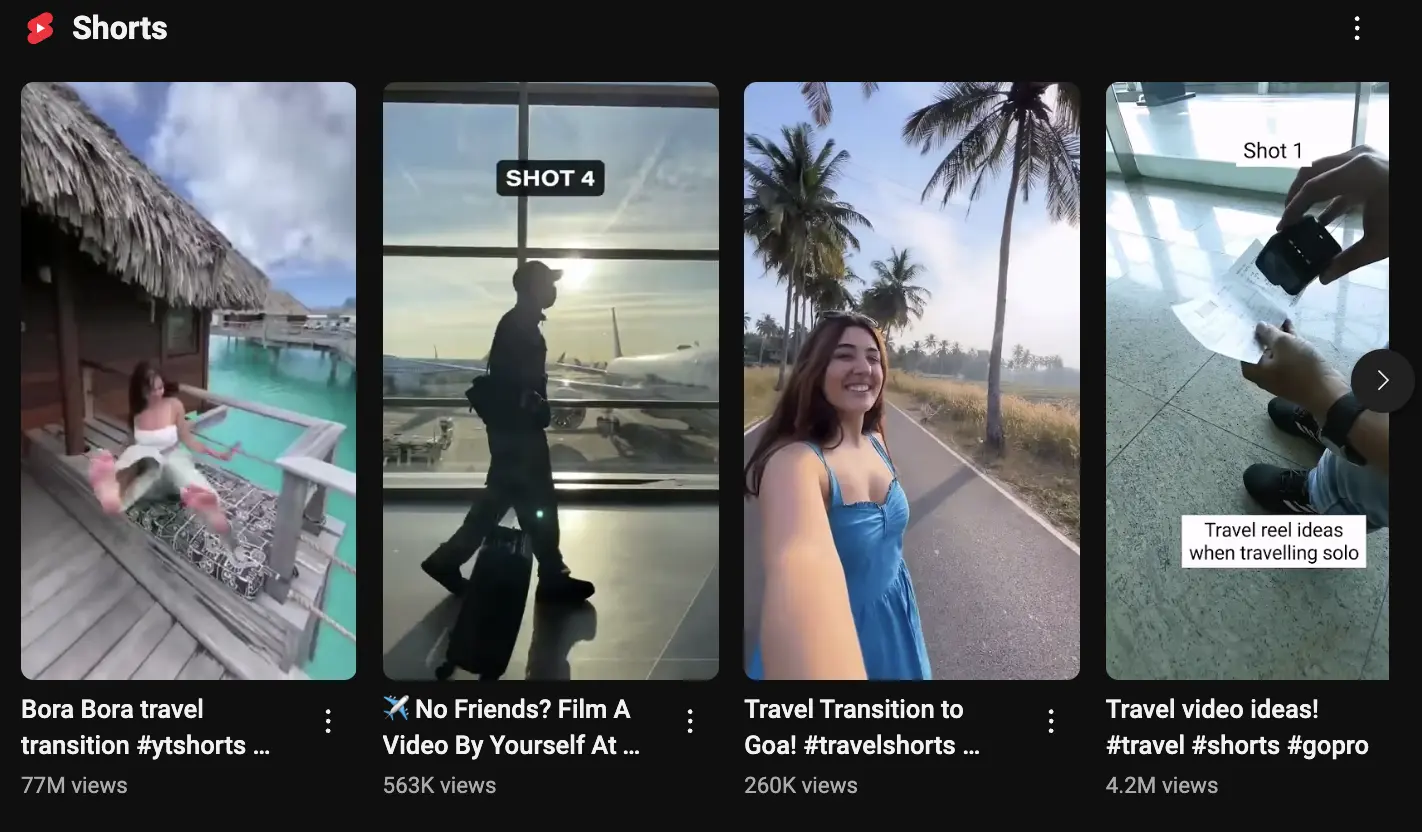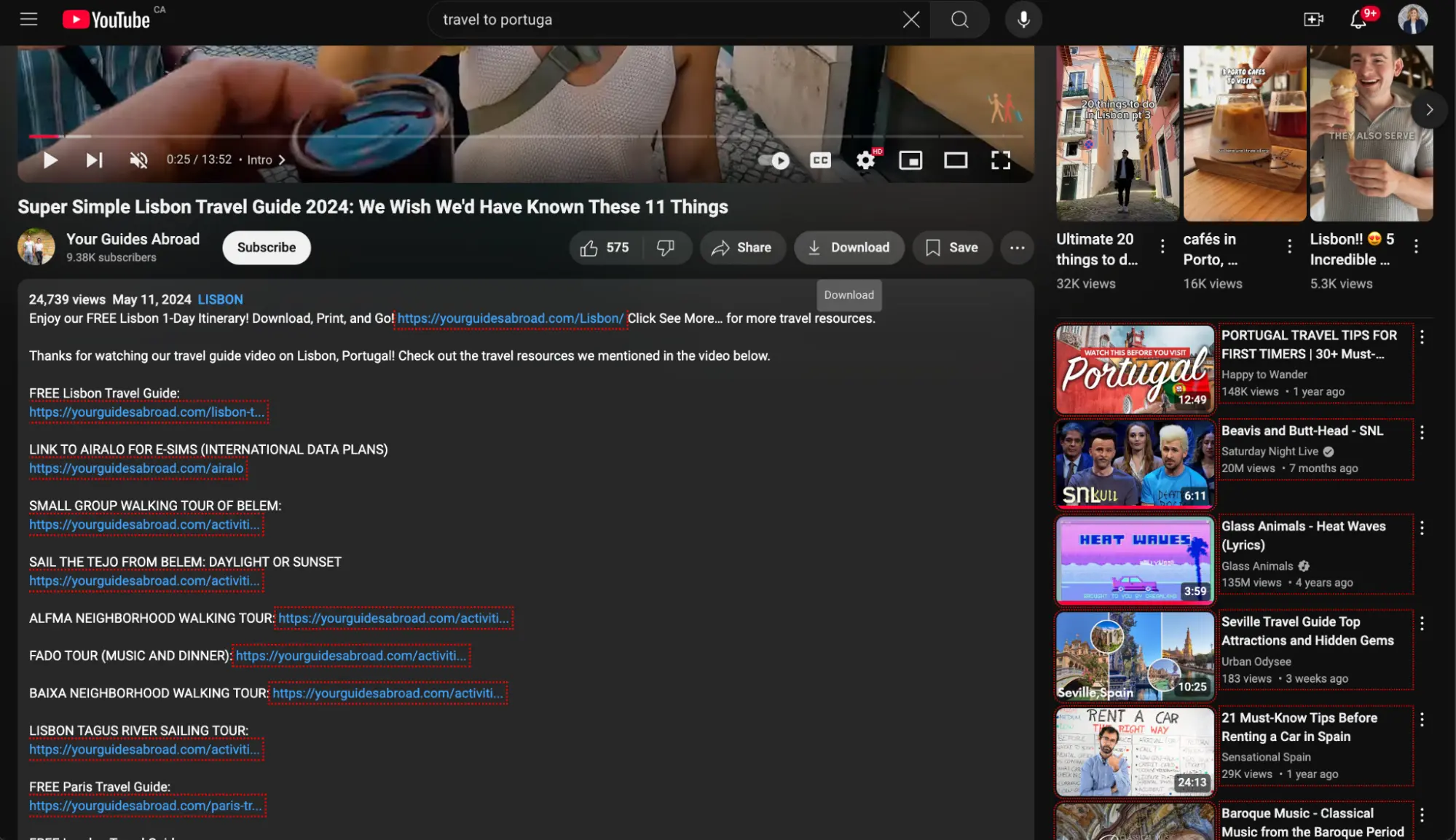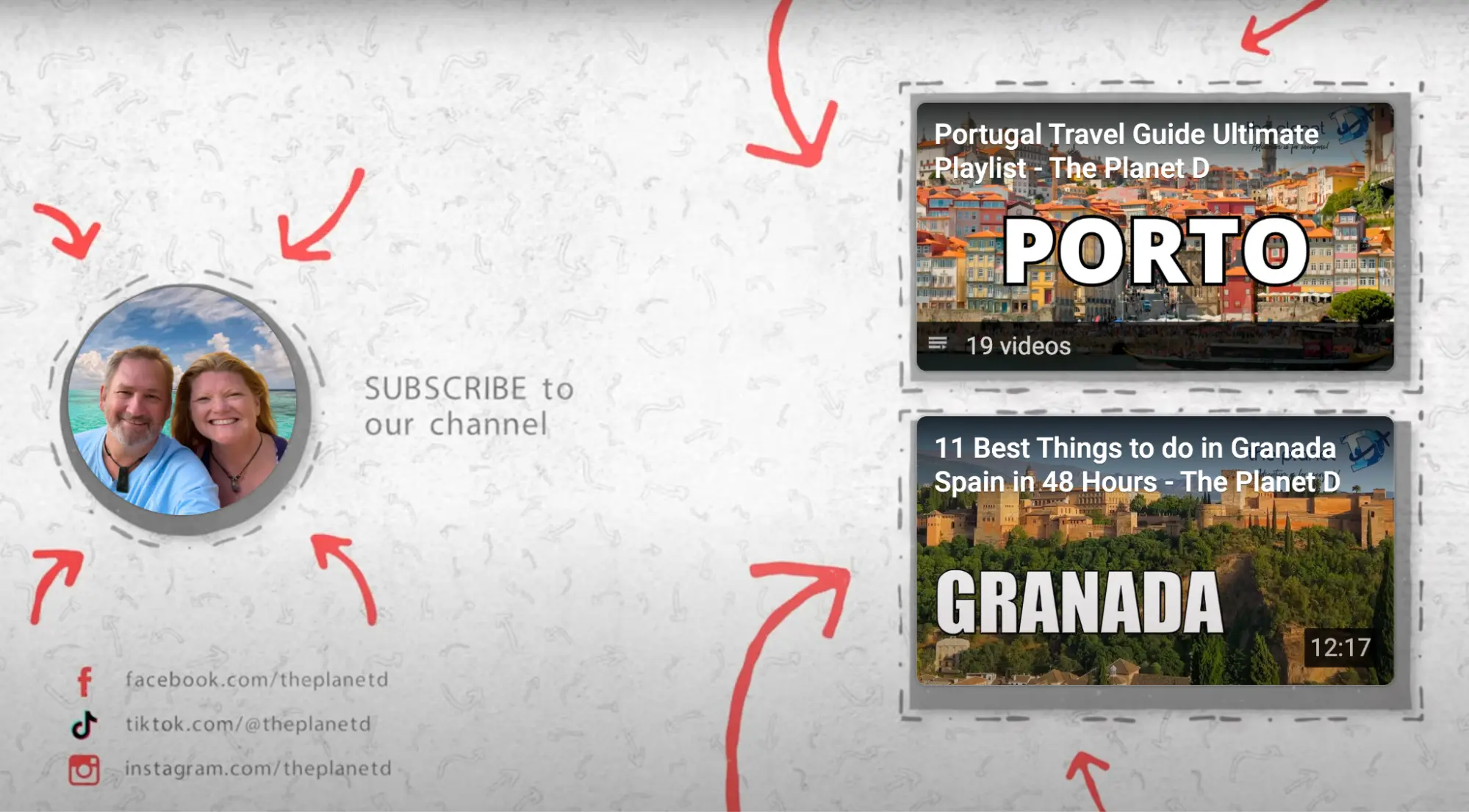If you’re willing to put in the effort to create engaging visual stories and build an audience, using YouTube to drive traffic to your website might be the perfect next step in your blog journey.
In this article, we’ll weigh the pros and cons so you can see if it’s worth your time.
Why are travel bloggers turning to YouTube?
Google’s constant updates have shaken the blogging world, with many travel bloggers seeing their rankings, and traffic, disappear overnight. Organic has become a gamble, leaving creators searching for more reliable platforms.
Enter YouTube.
It isn’t just a video platform; it’s the world’s second-largest search engine, with over 2.5 billion monthly logged-in users. But what makes it such a game-changer for travel bloggers?
- Personalized recommendations: YouTube’s algorithm suggests content based on user behavior, helping your videos reach the right audience – even if your channel is new.
- Long content lifespan: YouTube videos can continue attracting views and driving traffic for years.
- Monetization possibilities: From ad revenue to brand collaborations, YouTube provides a way to diversify your income while increasing exposure for your website.
- Community building: YouTube isn’t just about traffic – it’s about connection. You can engage with fans through comments, live chats, and videos, creating a loyal audience that complements and amplifies your blog’s reach.
- Search integration: YouTube videos often rank in Google searches, giving another way for your content to be discovered.
- Depth: YouTube allows in-depth storytelling, making it the perfect platform to share detailed itineraries, travel tips, and unique experiences.
In other words, for travel bloggers, YouTube isn’t just a platform. It’s a strategy for visibility, income, and long-term growth.
If you’re planning to earn through affiliate marketing on YouTube, Travelpayouts makes it easy. You can add affiliate links to your video descriptions or comments and even use affiliate QR codes directly in your videos – perfect for mobile viewers who want to take action instantly. Whenever someone books travel through your links or codes, you earn a commission – just like on your blog.
With over 100+ trusted travel brands in one platform (such as Booking.com, Viator, GetYourGuide, and more), Travelpayouts lets you turn your YouTube content into a revenue stream, without any extra hassle.
Is YouTube good for driving traffic?
The answer is yes, but only if you leverage it effectively.
One of YouTube’s key strengths is how it connects your content to an engaged audience. People don’t just stumble upon videos; they often watch with intention. This makes YouTube a strong traffic funnel for travel bloggers. But keep in mind that viewers won’t automatically click through to your site – you need to guide them there.
To learn how to do so, check out our tips below.
What are the challenges of working with YouTube?
While YouTube offers plenty of opportunities for travel bloggers, it’s not without its difficulties. Here are some of the common hurdles you might face:
- High competition: YouTube is crowded, and standing out can be tough. With millions of creators uploading content daily, carving out a niche and attracting consistent viewers takes time and effort.
- Time-consuming production: Compared with blog posts or Instagram updates, YouTube videos require significant effort. From scripting and filming to editing and optimizing, creating high-quality content can feel like a full-time job.
- Learning to use the platform: YouTube has a steep learning curve. Understanding how to optimize thumbnails, use keywords effectively, and navigate analytics can take some trial and error.
- Keeping viewers engaged: Unlike shorter-form platforms, YouTube demands sustained attention. If your content isn’t engaging, viewers may drop off before they reach your call to action, limiting traffic to your website.
How to get traffic from YouTube: 7 tips
Here are actionable strategies on getting traffic from YouTube and maximizing audience engagement:
1. Create engaging shorts
YouTube Shorts are a powerful way to grab attention and increase your channel’s visibility. These short, vertical videos attract viewers’ attention while they scroll and can include links to your full-length videos.

By using Shorts strategically, you can lead viewers to more detailed content on your channel, where they’re more likely to subscribe. Building that subscriber base increases your chances of turning viewers into blog visitors.
2. Use clear calls to action (CTAs)
Incorporate compelling CTAs into your videos and descriptions to prompt viewers to visit your blog. For instance, after discussing a travel destination, invite viewers to read your blog post for additional insights or deals.
Don’t leave your viewers guessing – tell them exactly what to do next. Mention your blog in your videos, including specific CTAs like, “Want the full itinerary? Head over to my blog for all the details.”
3. Add blog links to your video descriptions
You can also add CTAs directly to your video descriptions or pinned comments.


4. Use YouTube cards and end screens
Cards are clickable elements that pop up during the video, while end screens appear in the final seconds. These are great tools for encouraging viewers to take action.
For example, if you’re talking about the best beaches to visit in Bali, you can use a card mid-video to say, “Click here for my full travel guide.” Similarly, an end screen can feature a video playlist or a clickable link to a related blog post, giving viewers a way to learn more.


5. Maintain consistent branding across platforms
Your brand is the glue that ties your YouTube channel and blog together. A consistent look and feel across platforms helps your audience recognize your content instantly, whether they’re watching a video, reading a blog post, or scrolling through social media.
Start by aligning your visual elements: use the same logo, color palette, and fonts on your blog and YouTube channel. Your video thumbnails should be visually cohesive and ideally will reflect your blog’s aesthetic.
6. Engage with your audience
Responding to comments, asking questions, and nurturing conversations makes your viewers feel valued, encouraging them to return for more. Active engagement builds trust and creates opportunities to guide your audience to your website.
For example, if a viewer comments on your video about hidden gems in Paris and asks for more tips, reply with something like, “I actually wrote a blog post about this – check it out here [insert link].” This subtle approach lets you connect with your audience while nudging them toward your blog.

7. Be ready for behind-the-scenes work
Uploading a video to YouTube is just the tip of the iceberg. To drive traffic, you need a solid strategy. This includes creating an eye-catching thumbnail, doing keyword research, writing a compelling title and description, adding chapters, transcripts, and links, and setting up end screens and cards. Each element guides viewers to take action – whether that’s subscribing, watching more, or visiting your blog. It’s not just about uploading; it’s about optimizing.
What benefits does YouTube offer travel bloggers?
Here are a few.
1. Travel content thrives on YouTube
Travel is visual – what better way to showcase a destination than by bringing it to life on video? YouTube gives you the tools to do just that, letting you share experiences, sights, and stories from your unique perspective.
Plus, vlogs are popular on YouTube. Data shows that 65% of women between the ages of 16 and 34 watch them every week. Travel vlogs allow you to build a community around your adventures, one that’s drawn to your personality and style. The potential is enormous.
2. YouTube keeps your content visible and relevant
As mentioned above, YouTube is effectively a search engine that can make your content discoverable for years. By researching keywords and targeting content gaps, your videos can rank high in YouTube’s search results, attracting viewers who search for related topics – even if your channel is brand new.
But it gets even better. When you optimize your titles, descriptions, and tags, your videos can also rank in Google search results, doubling your chances of being found. And unlike social media posts that disappear quickly, YouTube videos are evergreen, staying relevant and continuing to drive traffic months or even years after they’re published.
3. Cross-promotion with YouTube shorts
If you’re already creating short-form videos for Instagram or TikTok, repurposing them for YouTube Shorts can expand your reach without the need to produce new content.
4. Getting paid by YouTube
By joining the YouTube Partner Program, you can earn money from ads that play on your videos. To qualify, you’ll need at least 1,000 subscribers and 4,000 watch hours in the past year – a goal that requires consistent, high-quality content and engagement.

So, is YouTube worth it?
YouTube offers a unique mix of visibility, community building, and potential income. While it requires strategy and effort, if you want to drive traffic from YouTube, it might be worth taking a look.
And ultimately, it’s not just a companion to your blog – it can stand on its own as a powerful platform to showcase your perspective, grow your audience, and provide revenue.
For more insights on driving blog traffic from other platforms, check out our articles on Facebook, Instagram, Pinterest, TikTok, and Flipboard.





